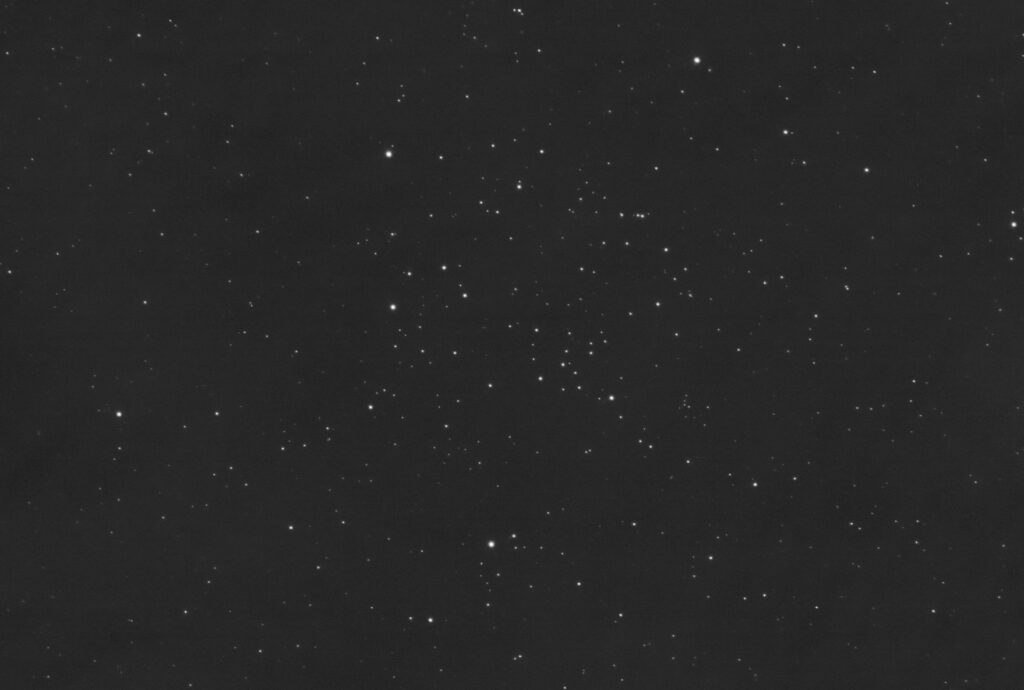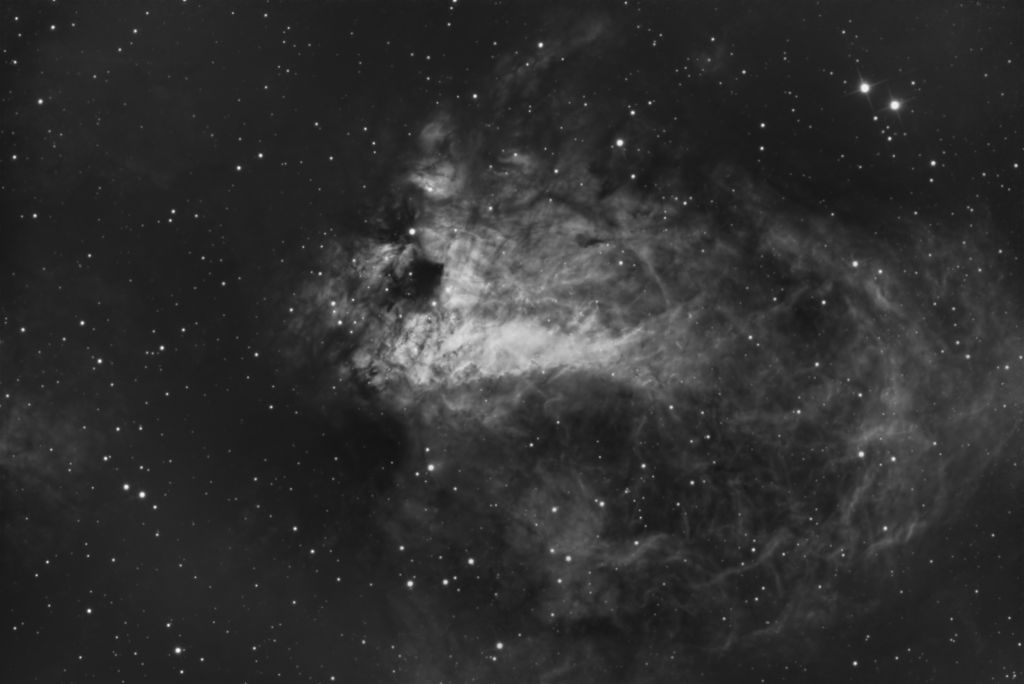Session Data
- Date: 15/08/2023
- Time: 21:13 – 00:52 UT
- Seeing: II. Good – Slight
- Transparency: II. Clear with some cloud
- Temp: 12.4C,
- Air Pressure: 1025mb,
- Humidity: 95%,
- Dew Point: 11.7C,
- Wind Speed: 1mph
- SQM: 18.77
Scope: Altair 250mm RC f/5.3 Camera: ZWO ASI 183MM Pro, Baader 35nm Ha, Dark subtracted and Flat fielded.
Session Notes:
NGC1746, Collinder 57

This is being observed as Collinder 402 as part of my Collinder Cluster observing program.
North is to the 5 o’clock in this image.
Took a total of 9 x 60 sec. It’s a pity I don’t have a colour camera, as there are three nice orange – presumably Mira – stars in the FOV. I see a ‘Z’ line of stars starting with a close pair of stars at the top at 19 37 25.7 +46 18 38.27 and snaking down towards the East and ending at a 11.3 mag star at 19 38 04.8 +46 24 39.98. The close pair of stars are a Double Double and part of ADS 12713 containing an A B C D component.
NGC6618, M17

I’m observing this as M17 tonight. North is to the 7 o’clock
The stars look a lot more bloated than the previous session on the 6th. It’s as though I have taken out the Ha filter. However, conditions appear to be clearer this evening as the amount of nebulosity I’m seeing in these subs is considerably more than before.
This is so much more complex when viewed EAA. The Swan figure is completely lost by the overwhelming amount of nebulosity as it spreads to the East. Shock fronts radiate from the image centre. In the centre is only what I can describe as a sardine with tail, but no head. This shape is brightly illuminated, presumably from the new stars being formed within it.
Just to get a sense of how different an EAA view is, here is a visual observation of M17 I made in 2012
The image above is the culmination of three nights of data 6, 15 and 16 of August.
The final image consists of 121 x 120sec subs giving a total integration time of 4.03 hours. From an imaging perspective, the raw integration of this image before any further processing was ultra smooth with barely any noise in the background. I’ve never had an image look this smooth before, so can only surmise that imaging at around 2.5 airmass over the three nights is the cause of this.
With M17 being beyond its peak this year, I won’t be trying to add more data to it, so will call this image done.